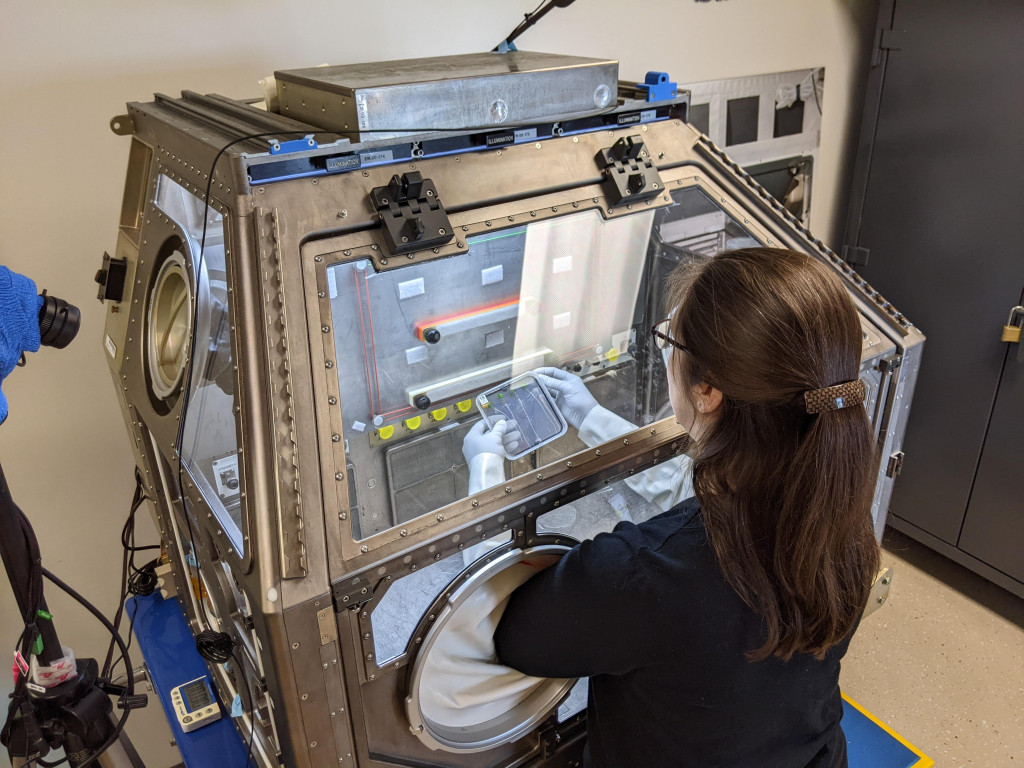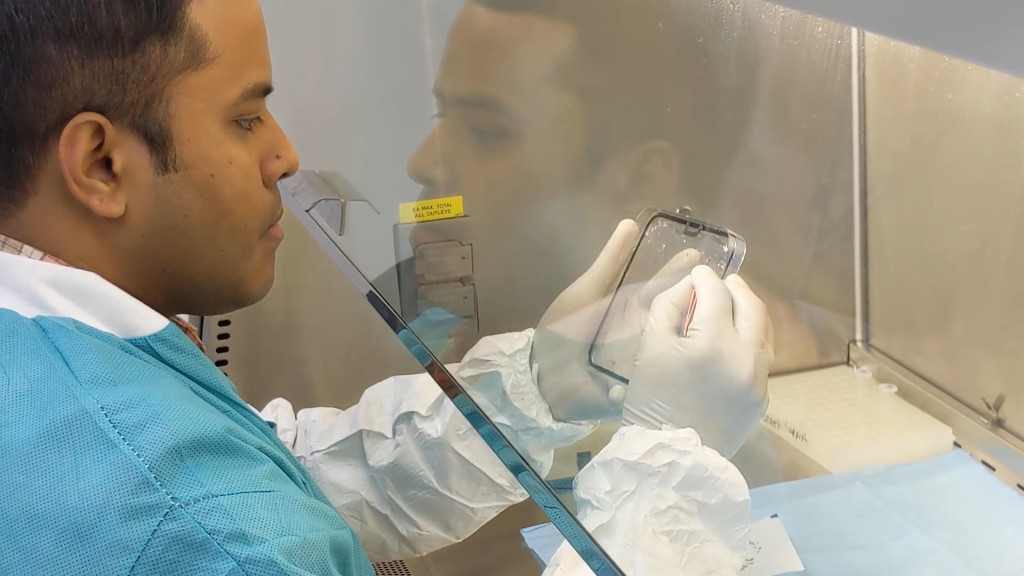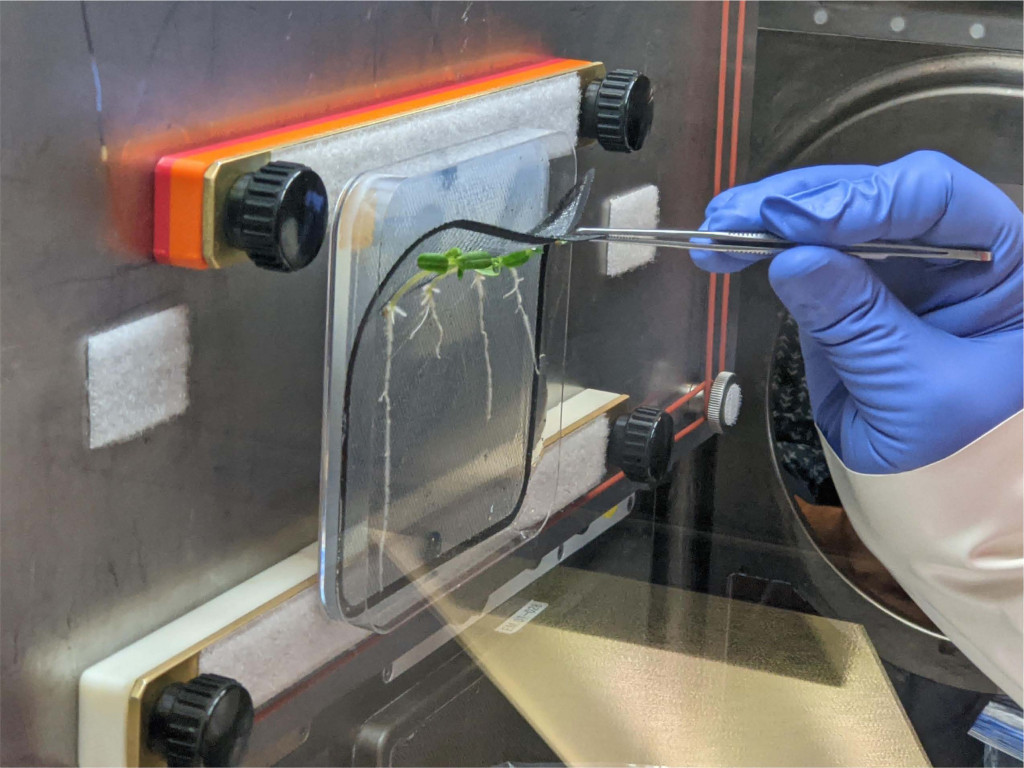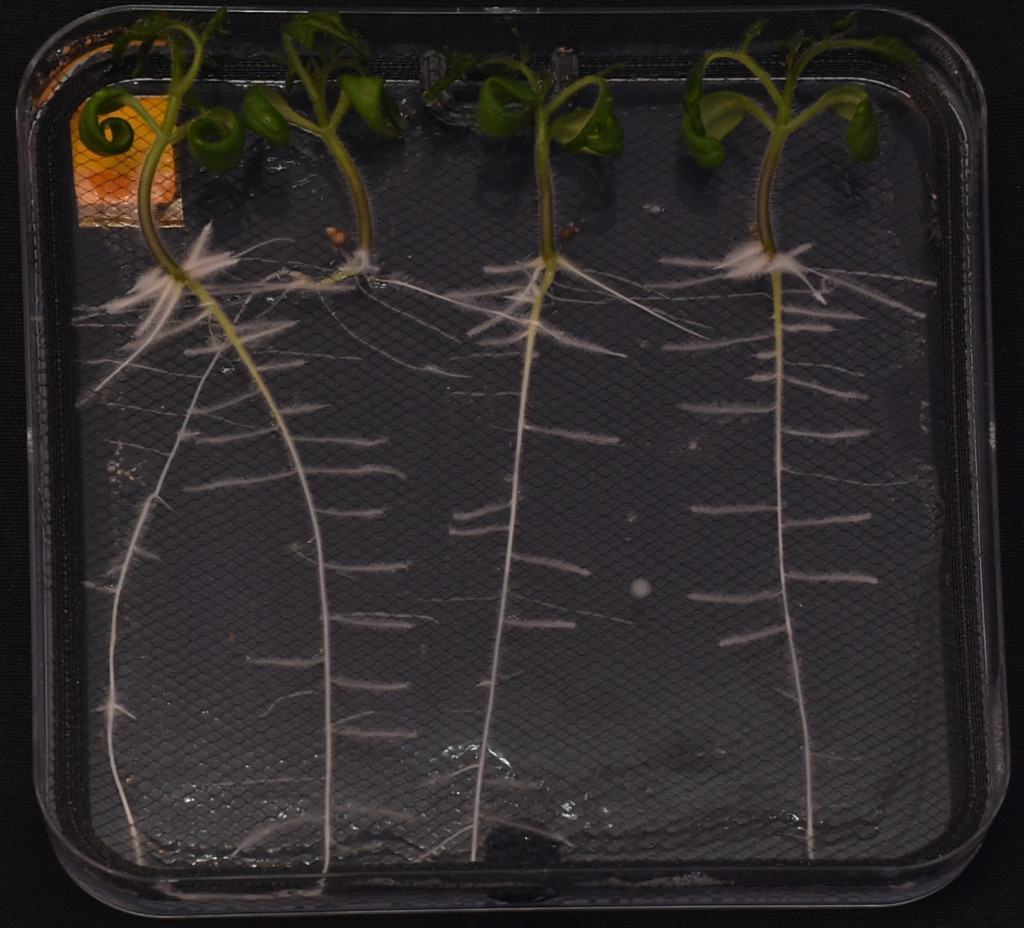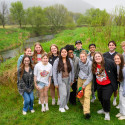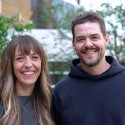These tomatoes are out of this world… or they will be soon
Simon Gilroy and his lab are no strangers to sending plants into space. And, at the end of January, the University of Wisconsin–Madison botany professor and his team will be doing it again for their sixth experiment with NASA on the International Space Station, this time with tomatoes.
Nicknamed TASTIE, which is short for Trichoderma Associated Space Tomato Inoculation Experiment, the researchers hope to better understand how plants grow without gravity and whether there are ways to help plants cope with the stressors involved with growing in space flight.
“Plants know up from down, right? They don’t have a brain or anything like that, but shoots grow upwards, and roots grow downwards. They clearly are using directional information,” Gilroy explains.
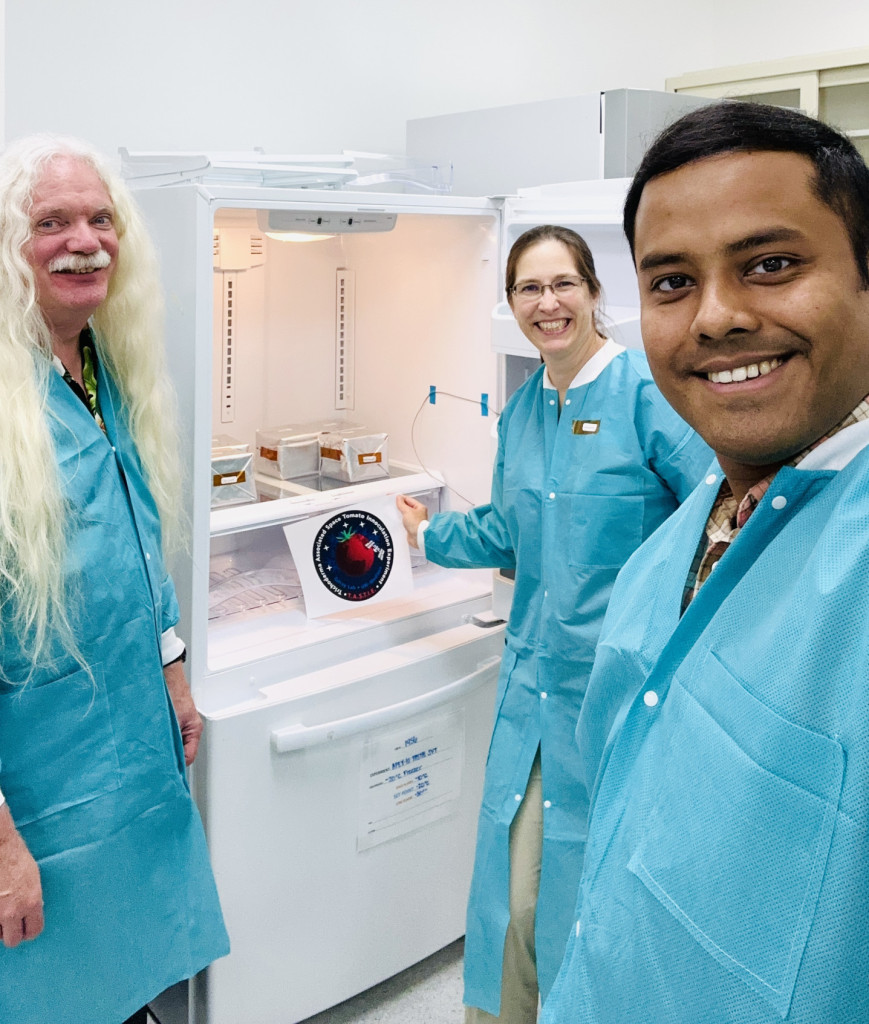
From left to right are Simon Gilroy, Sarah Swanson and Arkadipta Bakshi at the Kennedy Space Center. Photo courtesy of the Gilroy Lab
But remove gravity from the equation and things get wonky. And stressful. That’s where the team is hoping a common fungus they’re sending up along with the tomatoes will come in.
The fungus is a type from the genus Trichoderma, which is prevalent in all kinds of soils. On Earth, the fungus is known to be beneficial for plant growth, making the plants they grow with hardier for later encounters with threats and stressors.
Gilroy explains that on Earth, when a plant’s roots come into contact with the fungus, it sets off all kinds of alarms in the plant. Believing itself to be under attack, the plant switches on a series of genes that effectively activate its defense systems. Even after the plant realizes the fungus is not a threat and the two organisms establish a mutually beneficial relationship, the plant’s defensive genes stay on.
That means when the plant experiences a new threat later, it is already prepared and doesn’t have to waste time or resources turning on the genes that would protect it.
Space flight, as one may expect, is fraught with all kinds of stressors, from lack of gravity to differences in oxygen availability and changes to the way gases move in the environment. Astronauts train for years before going up into space, but the same isn’t possible for a tomato seed.
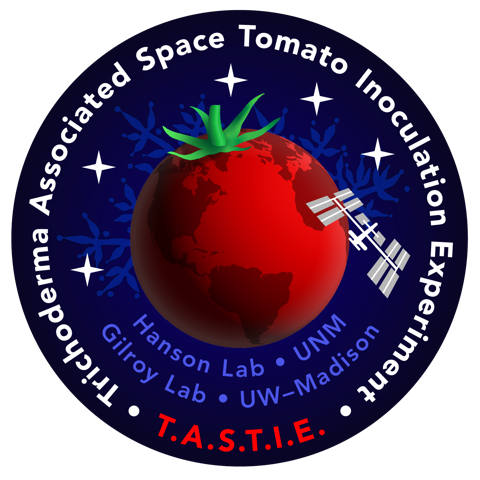 Plants in space also tend to experience something called oxidative stress, which can damage plants and slow their growth and productivity. On Earth, plants create and have access to compounds in soil called antioxidants that counteract oxidative stress, and Trichoderma fungus also helps plants generate their own antioxidants. Gilroy’s team is testing whether sending the fungus up with some of the tomato plants will help the plants cope with the oxidative stress of space flight.
Plants in space also tend to experience something called oxidative stress, which can damage plants and slow their growth and productivity. On Earth, plants create and have access to compounds in soil called antioxidants that counteract oxidative stress, and Trichoderma fungus also helps plants generate their own antioxidants. Gilroy’s team is testing whether sending the fungus up with some of the tomato plants will help the plants cope with the oxidative stress of space flight.
In the week leading up to launch, members of Gilroy’s team prepared the experiment materials in a lab at Kennedy Space Center in Cape Canaveral, Florida. With the help of a few astronauts, specially designed petri dishes, growing containers, harvest boxes and some powerful freezers, sets of tomato seeds can travel to the International Space Station. Some of them will grow alongside Trichoderma fungus in the same dishes and other tomatoes will grow in their own dishes without the fungus.
After the plants grow for two weeks on the ISS, astronauts will carefully harvest and flash freeze the samples. They will send them back to Earth so Gilroy and his team can study which genes were turned on or off in tomatoes that grew with the fungus and compare this to the genes of tomatoes that grew without the fungus.
While the experiment is running in space, the ISS will also collect data on the conditions onboard to help the researchers simulate those same growing conditions back on Earth, but with gravity thrown back into the mix. This will allow the scientists to isolate the effects of gravity in the experiment.
The team will also be able to use the data they collect from the space flight experiment to evaluate the accuracy of their current methods for simulating gravity-free plant growth experiments on Earth.
“There’s no anti-gravity machine, so, we have to come up with ways to simulate that on Earth in a way where we can do an experiment,” Gilroy says. “And the best way we have to do that is we can make the biology lose its directional sense.”
Right now, the researchers essentially grow a plant on a spinning wheel so that “up” and “down” are constantly changing. It’s much less sophisticated than a rocket launch, but also a lot more feasible given the resources that go into space flight experiments. More accurate simulations on Earth mean that scientists can run more experiments more regularly and tease out the best way to grow plants beyond Earth.
“The moon and Mars — where I think we’re gonna go — they’re a long way away. For the moon, it is feasible to constantly send your food,” Gilroy explains. “But if you have a long-term presence, it’s gonna be expensive and difficult. Once you get to the distances of things like Mars … eventually, you’re gonna have to be able to be self-sustaining at a significant level.”
This research is supported by NASA’s Science Mission Directorate’s Division of Biological and Physical Sciences Grant # 80NSSC21K0577.
Editor’s Note: This post has been edited to update the launch date.
Tags: botany, research, space and astronomy

